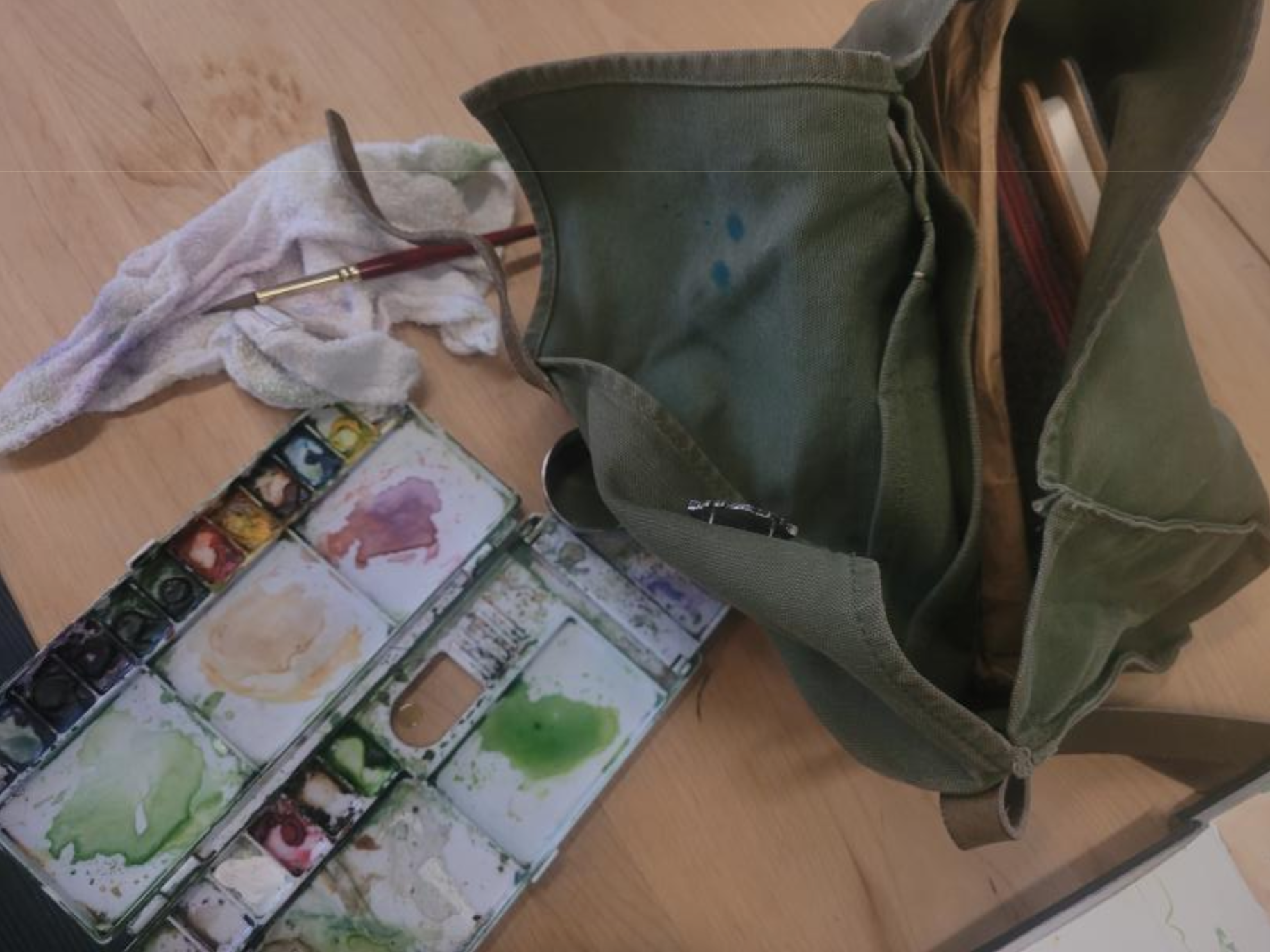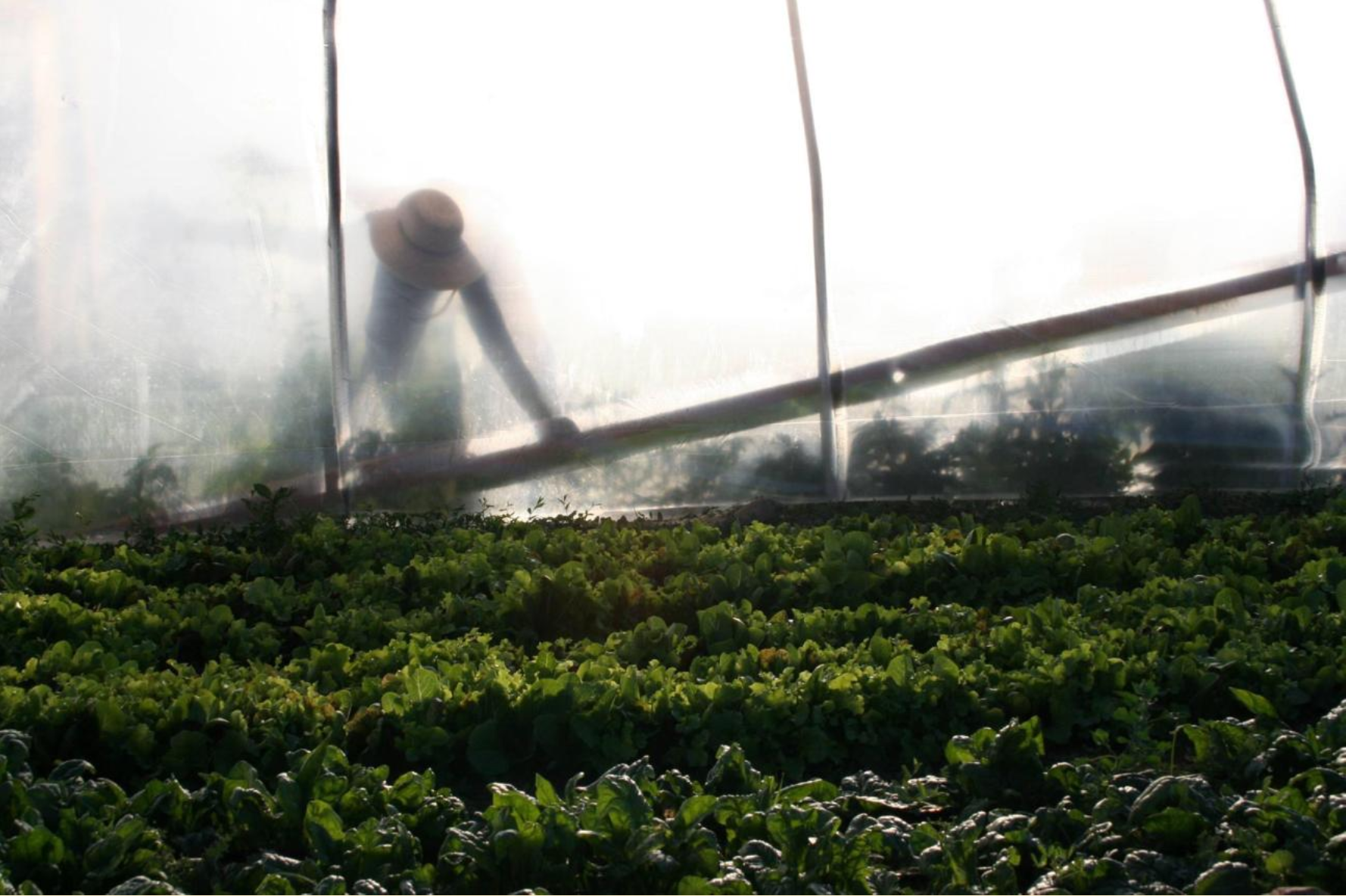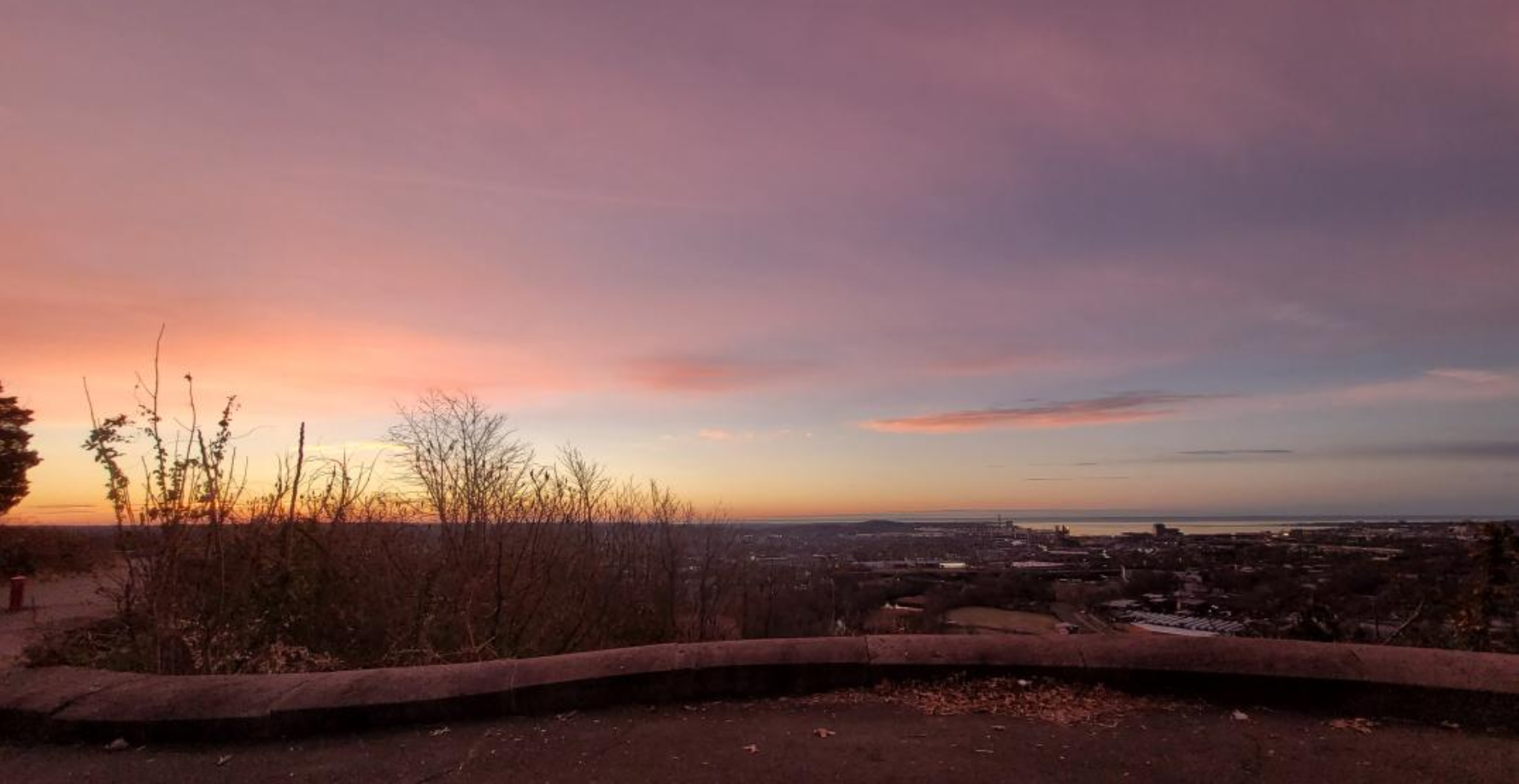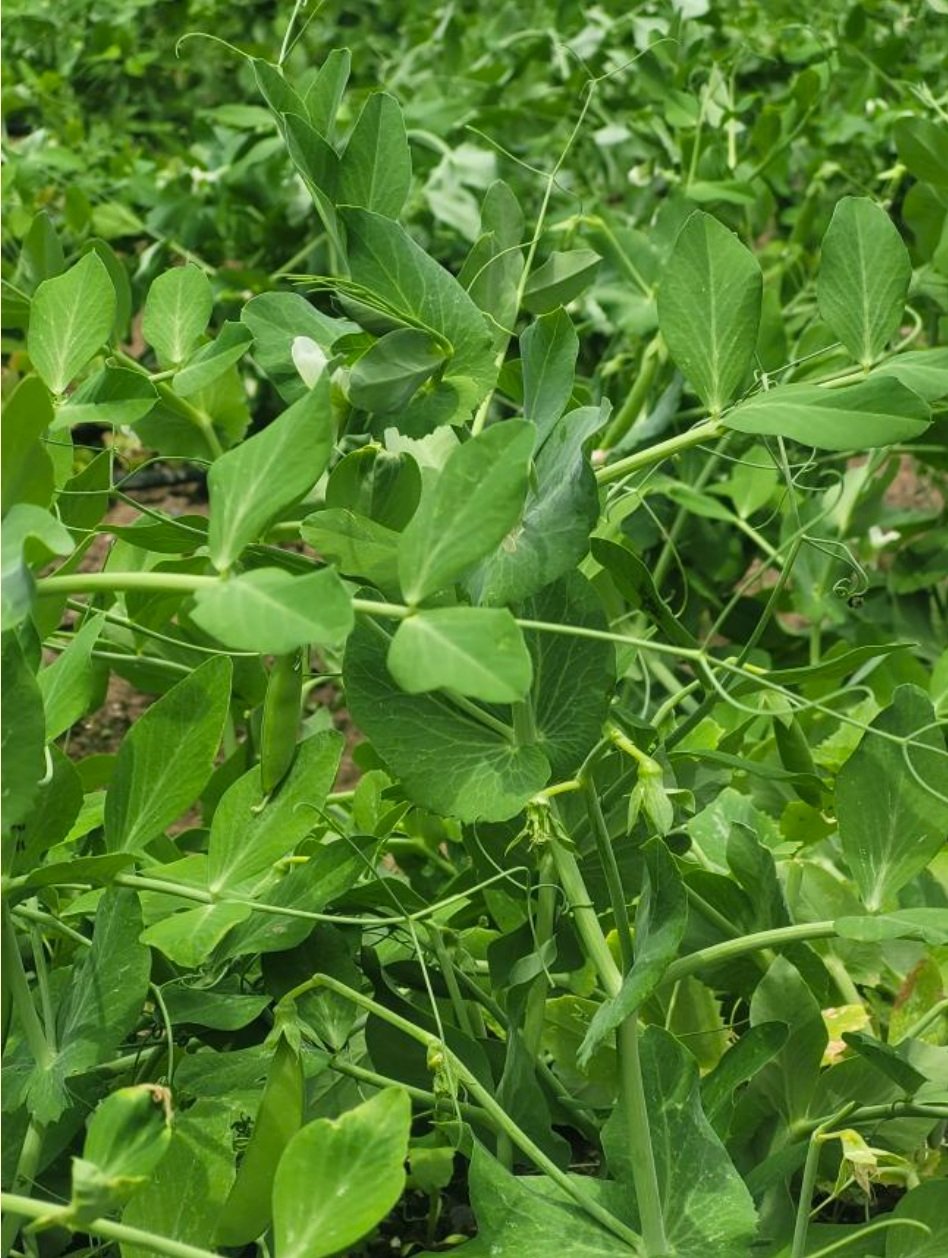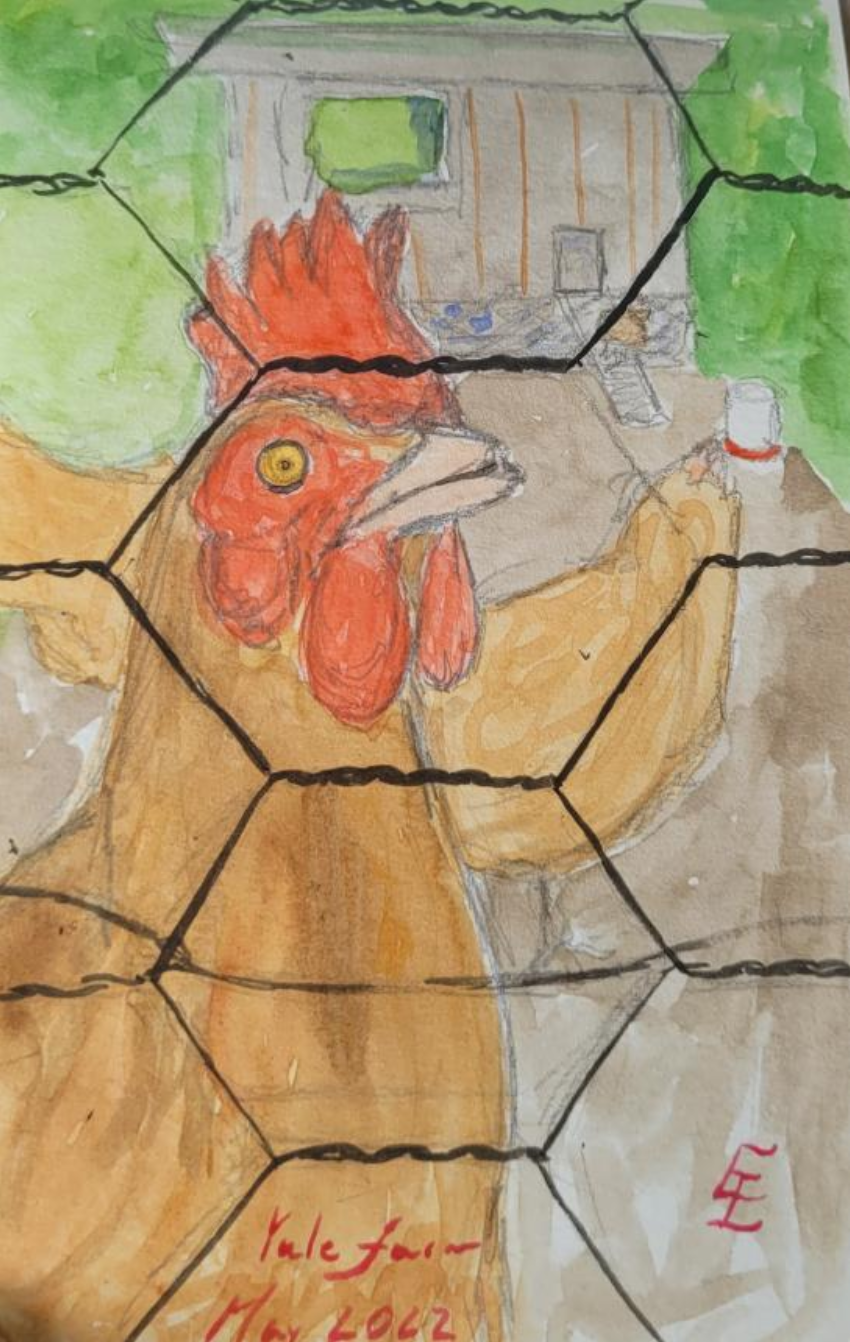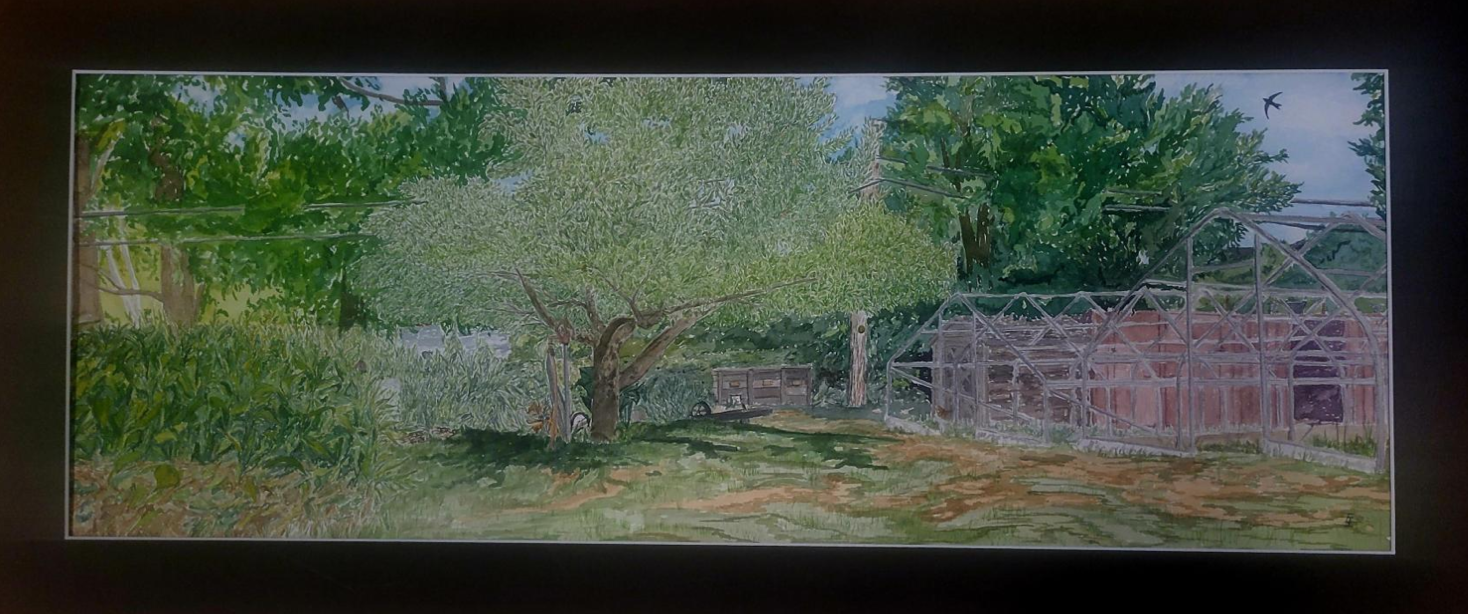This post is part of Eli White’s 2022 Yale Farm Summer Internship Independent Project.
Small Town Kid Goes to Yale to Dig Up Carrots
This summer I thought about beauty, aesthetics, and practice. The link to the watercolors I created can be found here, and my thoughts on the project follow.
1: Why?
I wrote this web of questions down at the beginning of the summer not as a laundry list of answers I hoped to walk out of this project with, but as the lens through which I wanted to approach all our conversations about agriculture. Beauty. Other words I considered: wonder, wholesome, magic, healthy, right, aesthetics, good—but I kept returning to beauty. Sometimes it seems silly, in a world with this many problems, to think about what is beautiful. And yet, I’m becoming more and more convinced that it’s not silly at all. Beauty is a serious matter. Beauty provokes serious questions.
“Why?” is a serious question. There are two ways to ask it—first, as a matter of causality. The food system is a dense, intricate web of causality. When you start to examine the roots of beauty in it, you find both astonishing and terrible sources. Genocide, opression, ongoing dispossesion of personhood. Yet also resistance, tradition, culture, family, human connection. Food as the ugly blade of injustice. Food as the shield of human care, a tapestry of community. If I’m doing nothing else with this project, I’m trying to convince you it’s worth thinking about what is beautiful. Beauty is revealing, both in its presence and its absence. It’s worth trying to see the world as a painter, thinking in color. Thinking in beauty.
The second way to ask the question “Why?” is a question of purpose and meaning. Of all the questions we ask, this is the one with the answer that doesn’t exist. “Why?” isn’t out there as “who?” or “what?” or “when?” or “where?” or “why?” as a question of “how?” are; we made “why?” up. It’s only in our heads. And I suppose that’s not to say that it doesn’t exist at all—our heads are part of this strange universe too—but it remains up to us. I found I could not write my answer in words, so I turned to watercolor.
2: Control
Farming and food are defined by control. The history of food, which we continue to write, is an account of how various human societies try to control and organize themselves. It contains examples of extreme cruelty. It contains examples of staggering kindness. What do the aesthetics of different farms say about their practices? Take for example the enormous monoculture crop of corn, bred to choke out all other life with the help of synthetic pesticides, or the tomato bred for uniformity and mechanical sorting. And consider alongside them a permaculture homestead where, despite endeavoring to follow nature’s example, every foot of land has been shaped by human hands.
Consider also, the loss of control in farming. With the ongoing drought ravaging the West, many of the farmers I knew growing up in Colorado are facing an increasingly bleak future. Native farmers of the Diné, Ute, and other tribes that have farmed in the Southwest for generations no longer can. Farmers everywhere are looking at a future of less and less control.
Water soluble pigments also have a long human history of control. There are varied traditions of mediums that can be called watercolor, ranging from the 19th century British watercolorists, to the much older brush paintings of East Asia, to prehistoric cave paintings. Watercolor, generally requiring less resources than oil, helped increase access to art in Europe as it gained respect. But watercolor was also used as a tool of British imperialism, with traveling painters in India bringing landscapes back to wealthy British oligarchs to help justify colonization.
I try to find a middle ground when painting and farming—between wanting to control every inch of a project, and letting it take what form it will. We cannot hold the entirety of things in our small, mortal hands; we have to learn to let things be as they will. Working in watercolor is already giving up a lot of control. Even with the strongest lightfast paint, watercolors will fade eventually. But natural water soluble pigments fade even faster. In some ways, I think I achieved that middle ground with my work this summer, and in others, I didn’t. The amount of control I end up having over my painting is, often, out of my control.
My painting bag, containing: one chronically messy palette, nine brushes rubber-banded to each other, a bag of pigments, pencils, metal sharpener, sandpaper sharpener, a kneaded eraser that I’m always losing, an ever-growing collection of ink pens, one small sketchbook, and one tiny sketchbook
3: Agriculture and Home, Space and Change
Agriculture is space.
Mancos valley, where I grew up, looking west, towards Mesa Verde and Sleeping Ute, Winter 2021
Megan Tallmadge (left) and my mother Sara Wakefield (right) in the grocery store they founded, Zuma Natural Foods with their children. Photo credit: Megan Tallmadge
My father (far left) covering a high tunnel in the Mancos Valley, circa 2014. Photo credit: Sarah Syverson
The Wily Carrot, an organic vegetable farm in the Mancos Valley, Southwest Colorado, Summer 2021. Photo credit: Kellie Pettyjohn
Kellie Pettyjohn working in a tomato high tunnel, Wily Carrot Farm, 2013. Photo credit: Kellie Pettyjohn, Tim Stubbs
The first “urban community garden” in my life, Mancos Valley Mount Lookout Grange, Summer 2013. Photo credit: Jennifer Bamesberger
Agriculture is change.
New Haven at sunrise from East Rock, Winter 2021
View of Harkness tower, Yale Campus, New Haven from Sterling Library, fall 2021
The Yale Farm, Summer 2022
Sparrow rests next to the Yale Farm tomato high tunnel, Summer 2022
Yale Farm: Hens, Red Oak Butter Lettuce, Sugar Ann Snap Peas, Summer 2022
4: Water
Few things are as essential as water. I tend to enjoy painting, when I can, en plein air—outside, from life. During the hot summer days I spent painting on the Yale Farm this summer, my paint “drank” the same water as I did, poured gently from my nalgene to the little cuts that clip on to the side of my palette. Without water, the brushes and the little dry mounds of pigment on my palette are useless, essentially dead. Similarly, a plant may have roots in the most nutrient rich soil in the world, but without water, it will die.
I grew up in a place that was more desert than forest or farm. The dry season at home is defined by dusty skies and raging forest fires. But when the winter snow melts in April, and the monsoons arrive in August, the valley blooms. Of course, there has never been a moment I have been alive where the Southwest has not been in a drought. Sometimes it looks like there might never be. And, largely due to agriculture, the Colorado River never reaches the sea.
5: Care
In Buddhist practice, there are two broad categories of meditation—mindfulness and metta, a sanskrit word meaning loving-kindness. Mindfulness focuses on bringing awareness to the entirety of what a person is experiencing. Loving-kindness focuses on cultivating compassion, often visualized as a light that expands from yourself, to the people you love, to the people you know, to the whole world, to the whole universe. Painting—often sitting rather still with a particular subject or place for many hours on end in solitude and silence—I have learned is a wonderful activity to apply what I have learned in meditation.
As an active, intentional practice, I love the Yale Farm, and I love agriculture. I think there’s a lot to be said for the potential of agriculture to transform us. This summer I spent a lot of time just sitting with the space, painting. Caring. Asking why it was here, why it was beautiful, why I found it beautiful. Controlling, and letting go of control. Thinking about where I came from. Drinking water from the Yale Farm spigot—which I swear tastes better than any other water in New Haven. And I found most of what I was feeling could not be put into words, but it could be put into color.
Here are my paintings and sketches. They’re not just of what the Yale Farm looks like, but of the experience of being there. Or, at least, my experience. And I hope they spark some thoughts, or some joy. I hope there’s some beauty to be found here.
Hens
Sugar Ann Snap Peas
Looking toward Edwards St
Young Corn
Red Oak Butter Lettuce
Incomplete painting of the pavillion
Sketch for apple tree painting
A Sonnet for an Apple Tree
When I consider our time together,
Ere the invocations of the falling leaves,
It will not matter much, I gather
That we, being mortal, must take our leave
In study of the fracturing of light
Into viridescence upon your boughs,
The name of beauty I found I could not write,
But I knew that it did not matter now.
Our bodies carry many questions
But affording them no resolution
No longer loads me with fear or tensions
We seek the deeper roots: revolution.
This is love, not as an afterthought
If you leave the fruit, it may go to rot
(I write one thing: It matters)
Liberty Apple Tree

